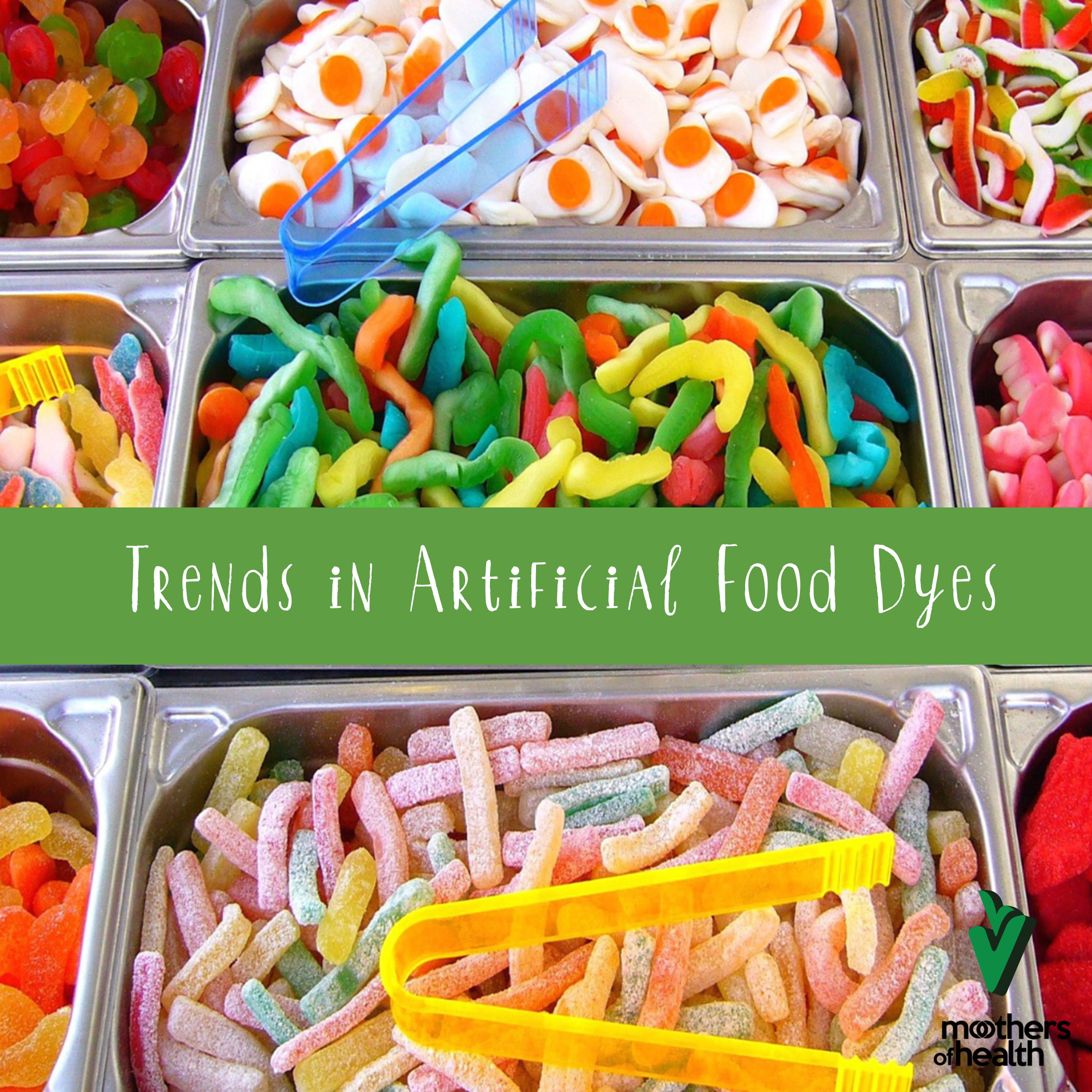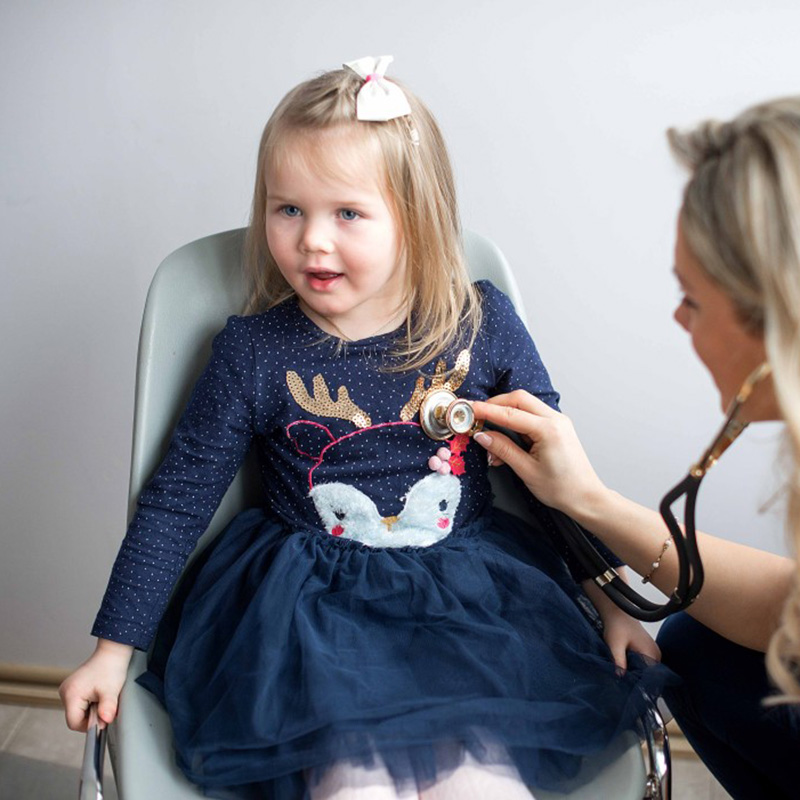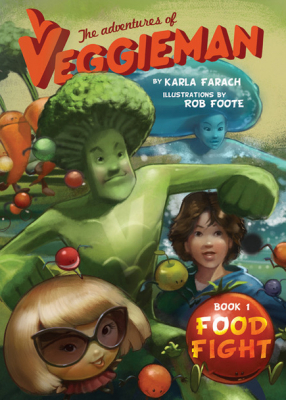
Artificial food colors periodically make news headlines and stir up interest in removing them from the food supply. Once the media buzz dies down, what ultimately happens to these dyes? The foods filling grocery store shelves tell us artificial colors are still common in packaged foods. Have American companies been listening at all to requests to ditch artificial food colors?
Big Food and Artificial Color Trends
Companies like to use artificial food dyes because they are inexpensive and very stable. In comparison, natural colors are relatively higher cost and less stable. It also can be difficult to achieve some of the desired colors naturally. Yet, some food companies are making an effort to use natural colors.
About five years ago, several major U.S. food companies made big news announcements that they were going to work on removing the artificial food dyes from their products. Some Big Food companies did follow through on removing fake colors.
For example, boxed macaroni and cheese is now commonly colored with paprika, turmeric, and annatto, which are plant-based colors. And some pickle brands have replaced Yellow 5 with turmeric extract to enhance the color.
Similarly, many yogurts are now colored with vegetable or fruit juice. Some gummy “fruit” snacks now also use plant-based colors. A few restaurant chains have even banned artificial food dyes from all their offerings.
In other cases, artificial colors haven’t been removed as companies originally announced. Or, some products, such as certain children’s cereals, were reformulated with natural colors but didn’t sell as well. So, artificially-colored versions have been brought back in some cases.
The trend of using natural colors is stronger — and perhaps better accepted — in Europe. In fact, one large candy maker removed artificial colors from its European candy but left the artificial colors in the candy sold in the United States.
Food Dye Rules in the U.S. versus Europe
Comparing food dye regulations in the United States versus those in Europe shows some interesting differences. Some artificial food colors approved for use in the United States are not permitted in Europe and vice versa.
For example, Green 3 isn’t allowed in Europe. But nine artificial colors allowed in Europe are banned in the United States. So, it isn’t exactly the wild west in America. But much more could be done to warn U.S. consumers of the potential risks of artificial colors.
The three most commonly used food dyes in the United States are Red 40, Yellow 5, and Yellow 6. These are used in foods without any special warning labels. In comparison, in Europe, products using these colors must include a warning label saying the colors “may have an adverse effect on activity and attention in children.”
The U.S. FDA looked at the same research on artificial food colors and children’s behavior that the European regulatory agency had reviewed. But the FDA decided there wasn’t strong enough scientific evidence to justify warning labels on foods containing artificial dyes.
Warning labels have the potential to help create more consumer demand for naturally-colored foods. If the FDA tells us not to worry about artificial colors, we have less incentive to give foods with less vibrant, natural colors a try.
Sneaky Junk Food Sources of Food Dyes
Many food sources of artificial colors are pretty obvious, like brightly colored candy, gelatin salads, orange-colored salty snacks, many children’s cereals, frosted toaster pastries, powdered drink mixes, sodas, sports drinks, ice cream, cookies, cakes, and frosting. Not only are they laced with artificial food dyes, but they also have little nutritional value and are often loaded with sugar.
In other cases, artificial food colors can sneak by you.
Here are some to watch out for:
- Fruity drinks — Fruit juice drinks commonly highlight their vitamin C content. A closer look at the ingredients shows they contain very little real juice and are laden with high fructose corn syrup (sugar) and artificial colors like Yellow 6, Red 40, and Blue 1.
- Pudding cups — These children’s lunchbox staples may appear healthy, as they tout being “made with real milk.” The reality is, they’re high in sugar and commonly contain artificial food dyes. Even vanilla pudding commonly contains Yellow 5 and Yellow 6.
- Trail mix — These are generally a blend of nuts, seeds, dried fruit — and sometimes chocolate candies coated in artificial colors. You can easily make trail mix, which gives you more control over the ingredients.
- Salad dressing — Some salad dressings get their vibrant colors from artificial dyes. The orange color of French salad dressing often comes from Yellow 5 and Yellow 6. Fruity vinaigrette dressings may sport a pink hue from the artificial color Red 40.
- Frozen yogurt — Though it may sound healthier than ice cream, frozen yogurt is high in sugar, and many flavors contain artificial colors like Red 40 and Blue 1. Plus, frozen yogurt shops commonly offer sprinkles and other candy toppings made with artificial colors.
The bottom line is that food companies are going to make what sells. So, vote with your dollars. Read ingredients carefully so you can avoid buying foods with artificial food colors.










